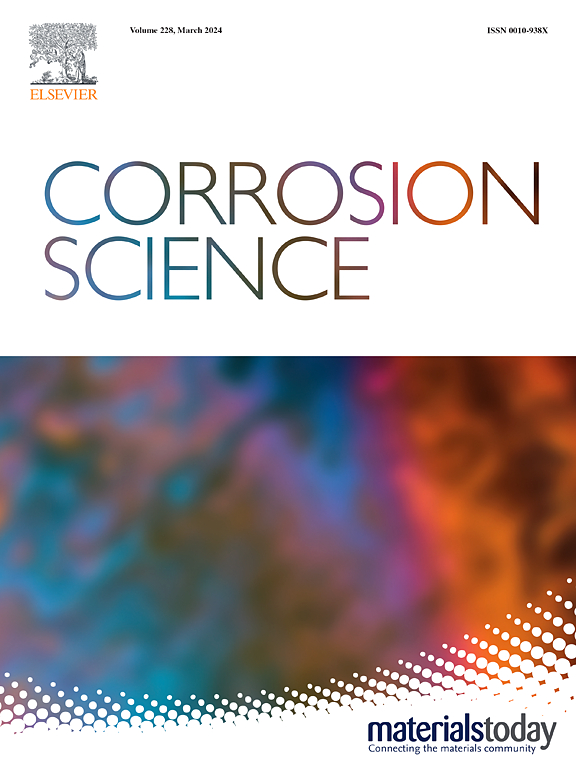高温下模型 Ni-30Cr 合金上铬鳞的生长机理
IF 7.4
1区 材料科学
Q1 MATERIALS SCIENCE, MULTIDISCIPLINARY
引用次数: 0
摘要
为了研究模型镍-30Cr 合金上铬鳞的生长机理,使用标记物和示踪剂进行了氧化试验。用 TEM-ASRAR 表征的取向晶粒位置表明,在 800 和 900 °C 时,鳞片主要向外生长。通过 SIMS 和 NanoSIMS 分析,使用 18O 和 54Cr 示踪剂进行的实验证实了在这些温度下通过晶界进行的阳离子迁移。根据这项研究和以前的研究,我们认为鳞片在 900 ℃ 时是通过铬空位扩散生长的,在 500 ℃ 时是通过氧空位扩散生长的。本文章由计算机程序翻译,如有差异,请以英文原文为准。
Growth mechanism of chromia scales on a model Ni-30Cr alloy at high temperatures
Oxidation tests with markers and tracers were carried out to investigate the growth mechanism of chromia scale on a model Ni-30Cr alloy. The location of oriented grains characterized by TEM-ASRAR indicated that the scale grew predominantly outward at 800 and 900 °C. Experiments using 18O and 54Cr tracers confirmed a cationic transport via grain boundaries at these temperatures, using SIMS and NanoSIMS analyses. In the light of this and previous studies, we propose that the scales grow via diffusion of chromium vacancies at 900 °C and oxygen vacancies at 500 °C.
求助全文
通过发布文献求助,成功后即可免费获取论文全文。
去求助
来源期刊

Corrosion Science
工程技术-材料科学:综合
CiteScore
13.60
自引率
18.10%
发文量
763
审稿时长
46 days
期刊介绍:
Corrosion occurrence and its practical control encompass a vast array of scientific knowledge. Corrosion Science endeavors to serve as the conduit for the exchange of ideas, developments, and research across all facets of this field, encompassing both metallic and non-metallic corrosion. The scope of this international journal is broad and inclusive. Published papers span from highly theoretical inquiries to essentially practical applications, covering diverse areas such as high-temperature oxidation, passivity, anodic oxidation, biochemical corrosion, stress corrosion cracking, and corrosion control mechanisms and methodologies.
This journal publishes original papers and critical reviews across the spectrum of pure and applied corrosion, material degradation, and surface science and engineering. It serves as a crucial link connecting metallurgists, materials scientists, and researchers investigating corrosion and degradation phenomena. Join us in advancing knowledge and understanding in the vital field of corrosion science.
 求助内容:
求助内容: 应助结果提醒方式:
应助结果提醒方式:


